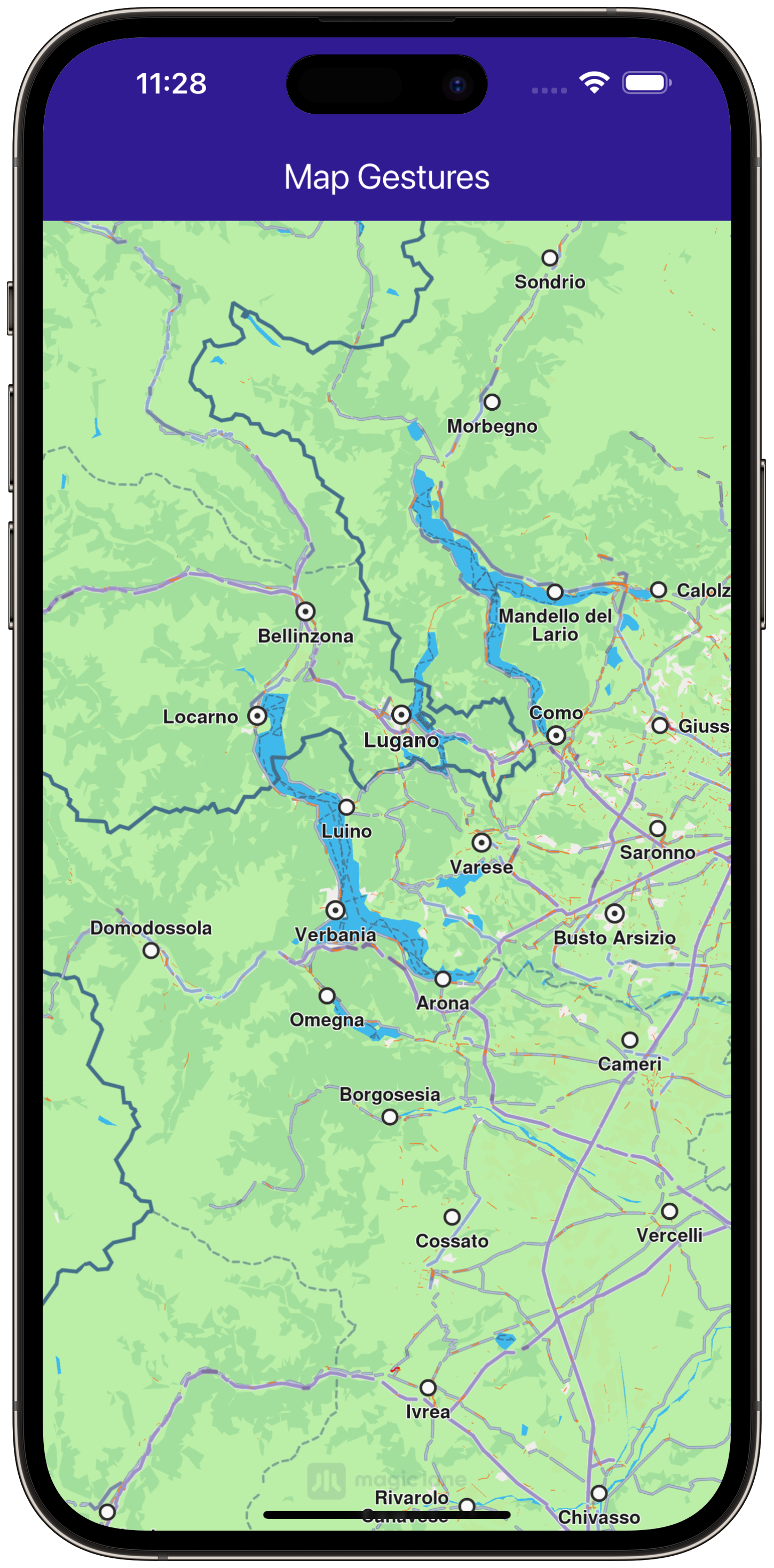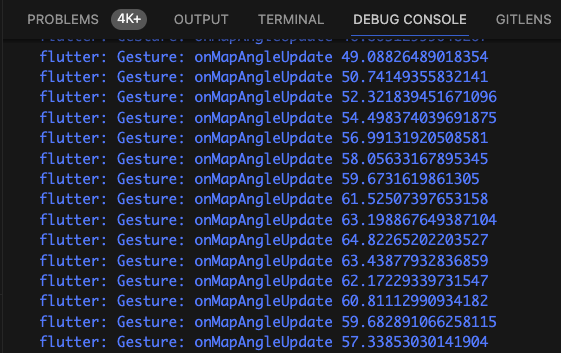Map Gestures¶
|
Setup¶
Prerequisites¶
Build and Run¶
Navigate to the project folder for this example to build and run the application.
Note - the gem_kit directory containing the Maps SDK for Flutter
should be in the plugins directory of the example, e.g.
example_pathname/plugins/gem_kit - see the environment setup guide above.
Run: flutter pub get
Configure the native parts:
First, verify that the ANDROID_SDK_ROOT environment variable
is set to the root path of your android SDK.
In android/build.gradle add the maven block as shown,
within the allprojects block, for both debug and release builds:
allprojects {
repositories {
google()
mavenCentral()
maven {
url "${rootDir}/../plugins/gem_kit/android/build"
}
}
}
in android/app/build.gradle
within the android block, in the defaultConfig block,
the android SDK version minSdk must be set as shown below.
Additionally, for release builds, in android/app/build.gradle,
within the android block, add the buildTypes block as shown:
Replace example_pathname with the actual project pathname
android {
defaultConfig {
applicationId "com.magiclane.gem_kit.examples.example_pathname"
minSdk 21
targetSdk flutter.targetSdk
versionCode flutterVersionCode.toInteger()
versionName flutterVersionName
}
buildTypes {
release {
minifyEnabled false
shrinkResources false
// TODO: Add your own signing config for the release build.
// Signing with the debug keys for now, so `flutter run --release` works.
signingConfig signingConfigs.debug
}
}
}
Then run the project:
flutter run --debugorflutter run --release
App entry and initialization¶
const projectApiToken = String.fromEnvironment('GEM_TOKEN');
void main() {
runApp(const MyApp());
}
This code initializes the projectApiToken with the required authorization token and launches the app.
How It Works¶
The example app demonstrates the following features:
Main App Setup: The main app initializes GemKit and displays a map.Map Gesture Handlers: Various gesture callbacks are registered on the map to track user interactions, including touch, movement, angle changes, and long presses.
User Interface¶
class MyApp extends StatelessWidget {
const MyApp({super.key});
@override
Widget build(BuildContext context) {
return const MaterialApp(
debugShowCheckedModeBanner: false,
title: 'Map Gestures',
home: MyHomePage(),
);
}
}
class MyHomePage extends StatefulWidget {
const MyHomePage({super.key});
@override
State<MyHomePage> createState() => _MyHomePageState();
}
Map Gesture Interactions¶
class _MyHomePageState extends State<MyHomePage> {
late GemMapController _mapController;
@override
void dispose() {
GemKit.release();
super.dispose();
}
@override
Widget build(BuildContext context) {
return Scaffold(
appBar: AppBar(
backgroundColor: Colors.deepPurple[900],
title: const Text('Map Gestures', style: TextStyle(color: Colors.white)),
),
body: GemMap(onMapCreated: _onMapCreated, appAuthorization: projectApiToken),
);
}
void _onMapCreated(GemMapController controller) {
_mapController = controller;
_mapController.registerOnMapAngleUpdate((angle) {
print("Gesture: onMapAngleUpdate $angle");
});
_mapController.registerTouchCallback((point) {
print("Gesture: onTouch $point");
});
_mapController.registerMoveCallback((point1, point2) {
print('Gesture: onMove from (${point1.x} ${point1.y}) to (${point2.x} ${point2.y})');
});
_mapController.registerOnLongPressCallback((point) {
print('Gesture: onLongPress $point');
});
}
}
This code sets up the main screen with a map and registers gesture handlers to print updates to the console based on user interactions.
|
Gesture Callbacks¶
Each of the following callbacks listens to a different type of map interaction:
registerOnMapAngleUpdate: Monitors angle changes when the map rotates.registerTouchCallback: Detects touch interactions on the map.registerMoveCallback: Tracks the movement from one point to another on the map.registerOnLongPressCallback: Detects long-press gestures on the map.



